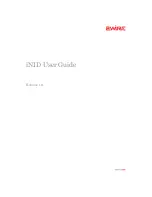
The additional Virtual COM ports and Terminal server can act as other IP router ports. This enables
Serial and TCP based RTUs to be combined in one network.
Two different Radio protocols are available in the Router mode: Base driven and Flexible.
• Base driven
This protocol is optimized for TCP/IP traffic and/or 'hidden' Remotes in report-by-exception networks,
when a Remote is not be heard by other Remotes and/or different Rx and Tx frequencies are used.
It is suitable for a star network topology with up to 255 Remotes under one Base station, where each
Remote can simultaneously work as a Repeater for one or more additional Remotes.
• Flexible
Suitable for master or even multi master-slave polling and report by exception from remotes concur-
rently. No limits in network design – each radio can work as base station, a repeater, a remote, or
all of these simultaneously
5.2.1. Router - Base driven
All traffic over the Radio channel is managed by the Base station. Radio channel access is granted by
a deterministic algorithm resulting in collision free operation regardless of the network load. Uniform
distribution of Radio channel capacity among all Remotes creates stable response times with minimum
jitter in the network.
All communication on Radio channel is controlled by the Base station; all frames inside the radio network
have to be routed through the Base station. Appropriate routing has to be set.
Base station can communicate with the Remote stations using individual modulation and FEC settings.
Any Remote can work as a Repeater for another Remote. Only one Repeater is possible between the
Base station and Remote, however a number of Remotes can use the same Repeater.
There is no need to set any routes in Routing table(s) for Remote stations located behind Repeater.
Forwarding of frames from the Base station over the Repeater in either direction is provided transparently
by the Base driven protocol.
When Remote to Remote communication is required, respective routes via the Base station must be
set in Routing tables in the Remotes.
Frame acknowledgement, retransmissions and CRC check, guarantee data delivery and integrity even
under harsh interference conditions on the Radio channel.
5.2.1.1. Router - Base driven, Functionality example
A star topology with one repeater is used in the following example of a SCADA network using a polling
and report by exception combination. The Repeater is also serving as a Remote radio. The packets’
acknowledgement on Radio channel is used in both directions in the example.
RipEX2 Radio modem & Router – © RACOM s.r.o.
44
RipEX2 in detail
Содержание RipEX2
Страница 2: ......
Страница 12: ...Fig 1 2 RipEX2 bench testing RipEX2 Radio modem Router RACOM s r o 12 Quick guide...
Страница 14: ...2 1 Dimensions Fig 2 1 RipEX2 dimensions RipEX2 Radio modem Router RACOM s r o 14 Product...
Страница 138: ...RipEX2 Radio modem Router RACOM s r o 138 Settings...
Страница 225: ...Fig 10 1 Sample document 1 3 225 RACOM s r o RipEX2 Radio modem Router Safety regulations warranty...
Страница 226: ...Fig 10 2 Sample document 2 3 RipEX2 Radio modem Router RACOM s r o 226 Safety regulations warranty...
Страница 227: ...Fig 10 3 Sample document 3 3 227 RACOM s r o RipEX2 Radio modem Router Safety regulations warranty...
Страница 234: ...Fig 10 7 Grant for RipEX2 1A RipEX2 Radio modem Router RACOM s r o 234 Safety regulations warranty...
Страница 235: ...Fig 10 8 TCB Grant for RipEX2 4A 235 RACOM s r o RipEX2 Radio modem Router Safety regulations warranty...
Страница 236: ...Fig 10 9 TCB authorization RipEX2 Radio modem Router RACOM s r o 236 Safety regulations warranty...
Страница 237: ...Fig 10 10 FCB certificate for RipEX2 1A 237 RACOM s r o RipEX2 Radio modem Router Safety regulations warranty...
















































